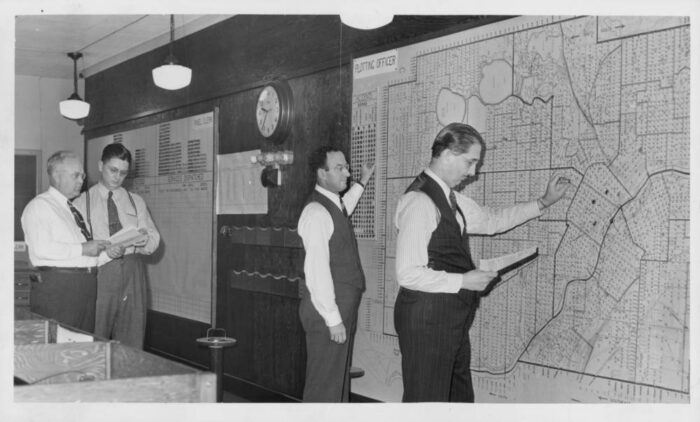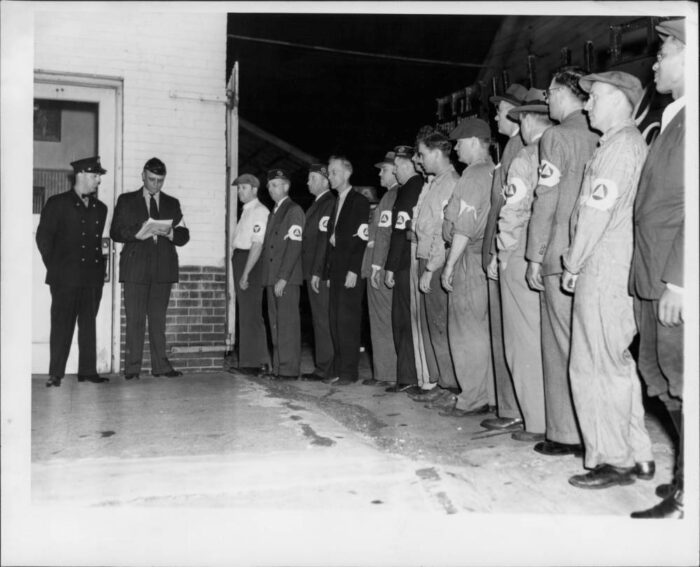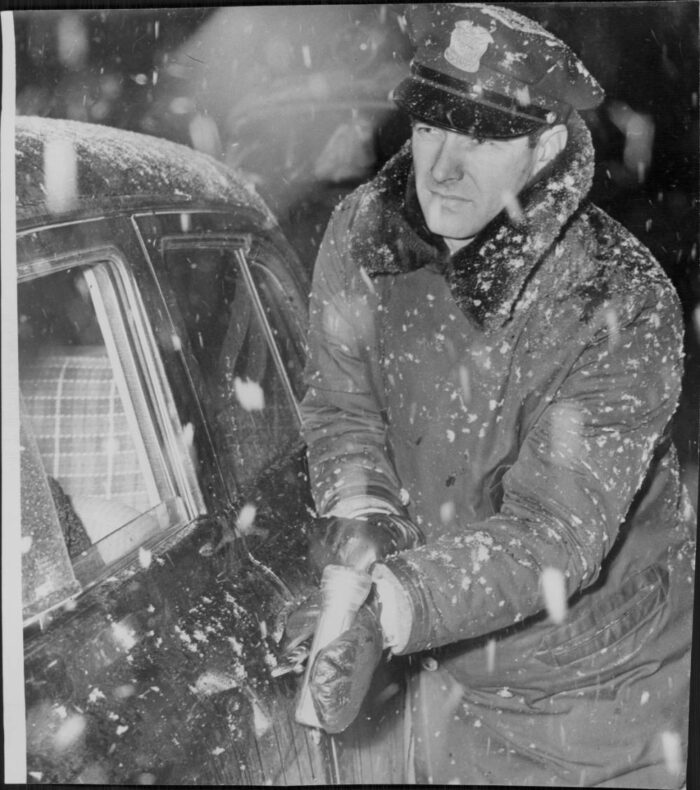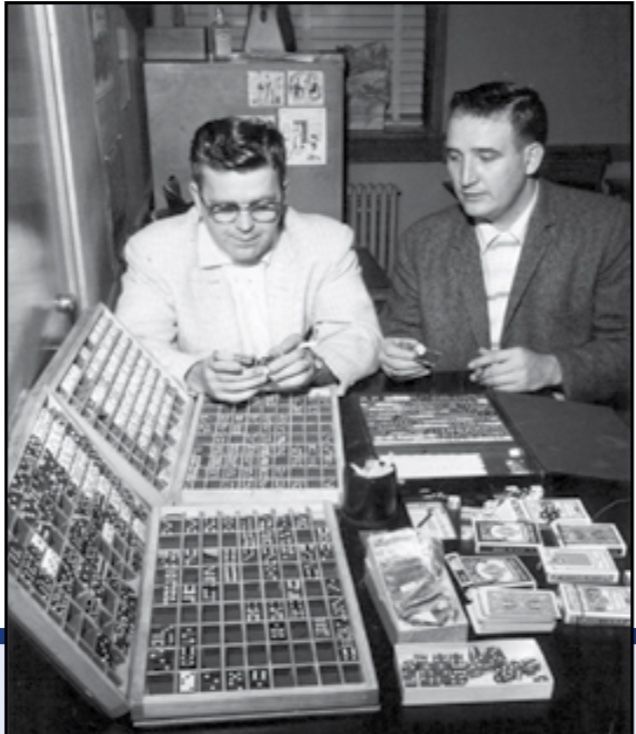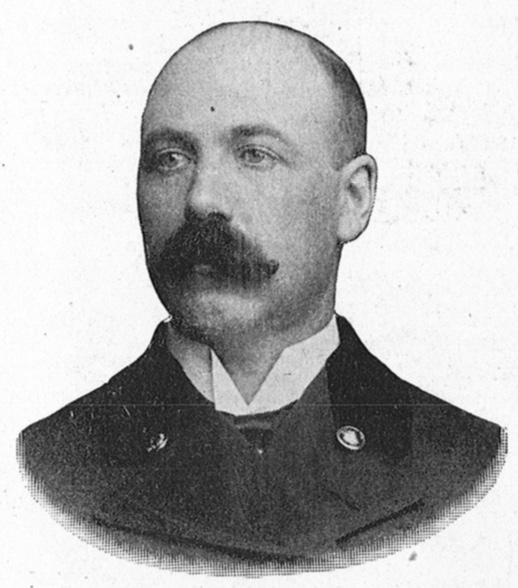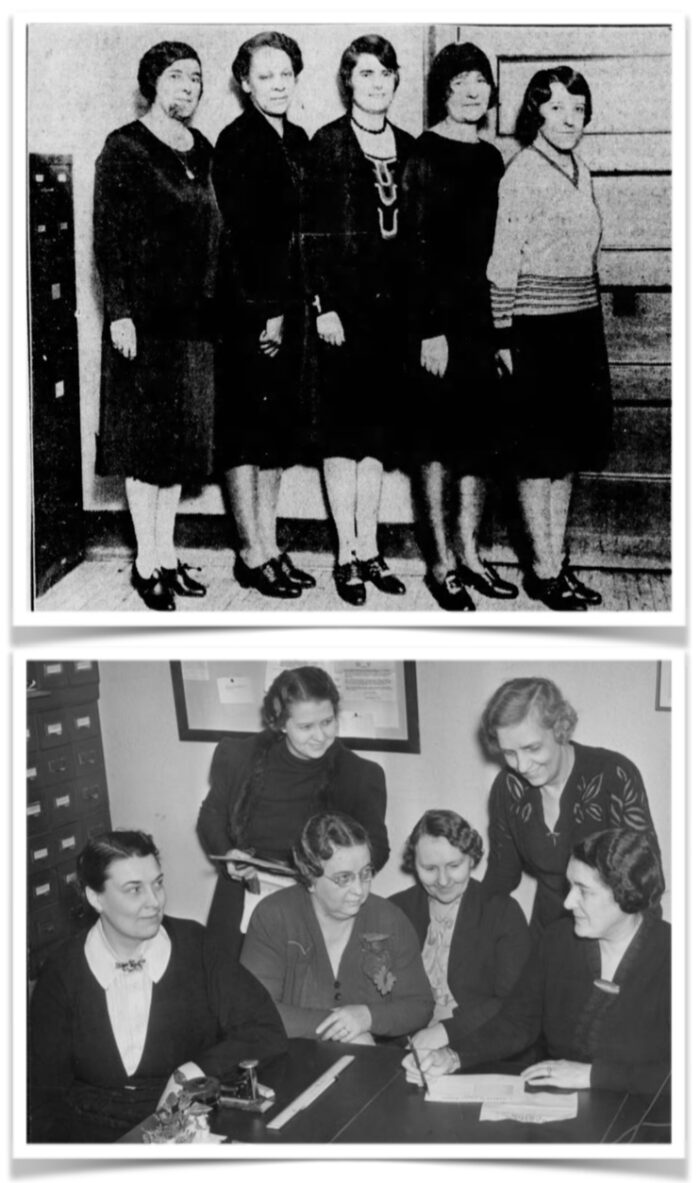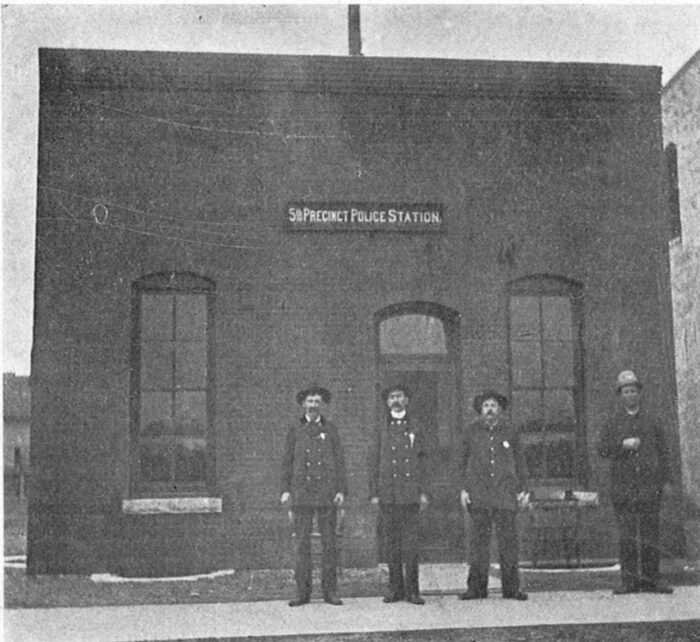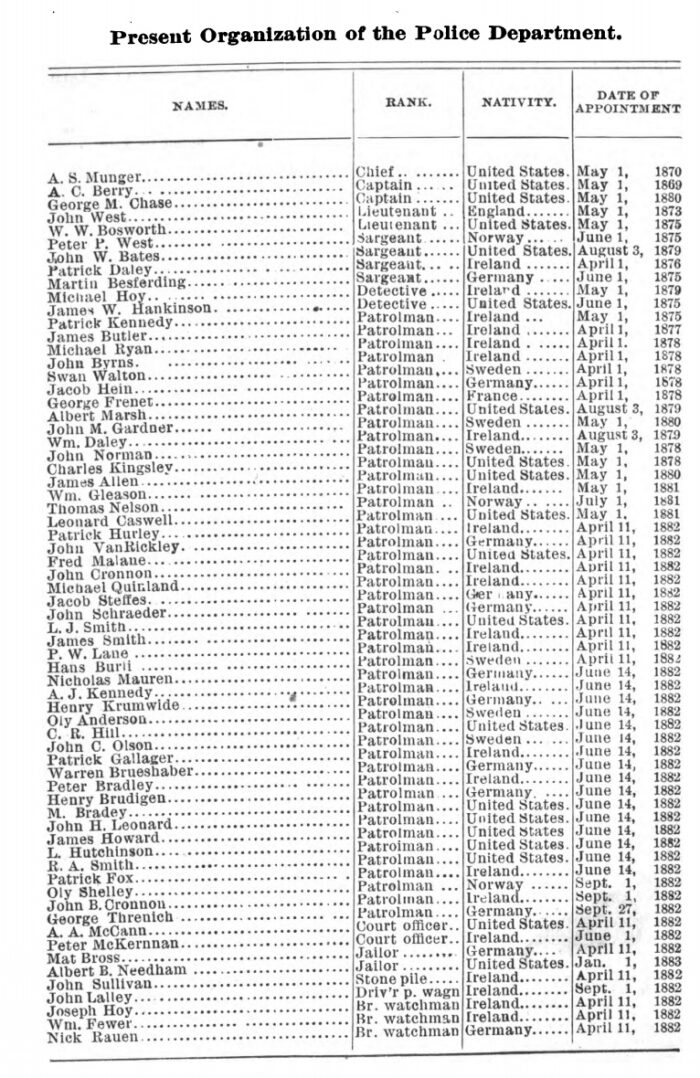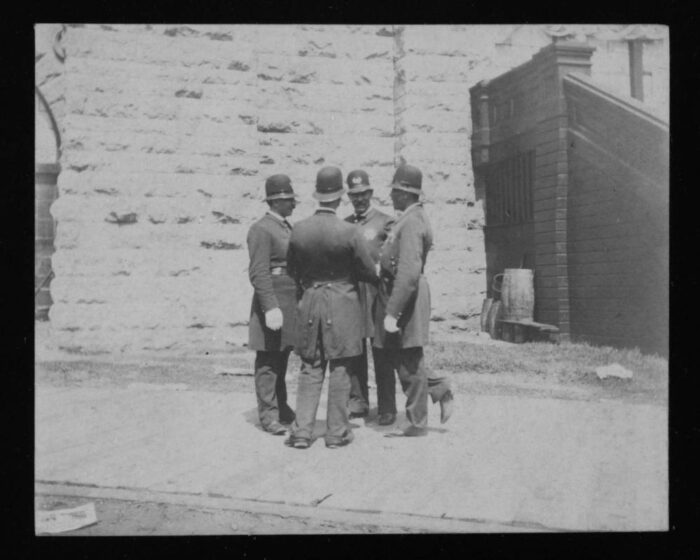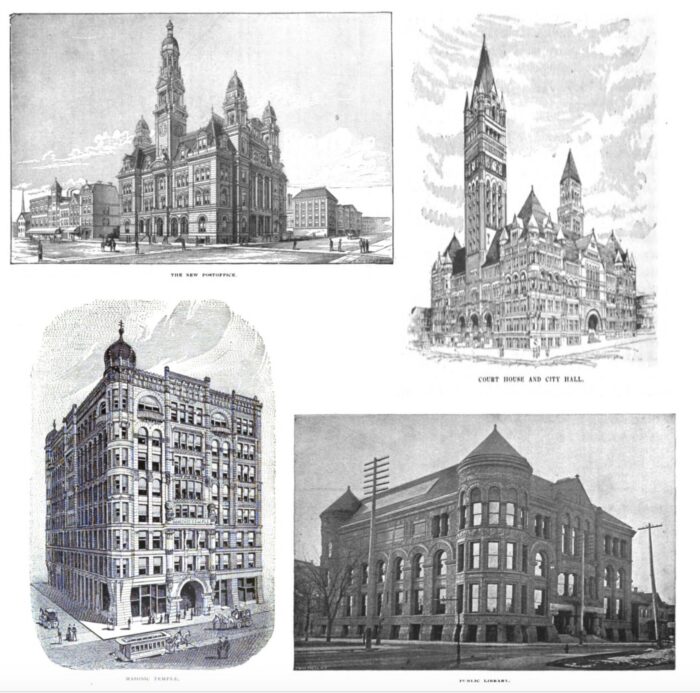Pictured above is the full roster of the Minneapolis Police Department in 1883 as recorded in the Minneapolis Annual Report of the same year. It shows a department of 66 members with the following breakdown:
- 1 Chief
- 2 Captains
- 2 Lieutenants
- 4 Sergeants
- 2 Detectives
- 46 Patrol Officers
- 2 Court Officers
- 2 Jailers
- 1 Stone Pile Supervisor
- 1 Paddy Wagon Driver
- 3 Watchmen
Let’s place the spotlight for a moment on one member of the roster, Sergeant John H. Leonard, who was appointed to the Department by Mayor Ames on June 14, 1882 and promoted to Sergeant in August of 1887.
Sergeant Leonard was born in St. John’s, New Brunswick on April 9, 1853. He spent his early years in Boston where he was educated in the public schools. After his school days ended, he learned the trade of wood-turning before moving west to work in the Superior mines. In 1877, Sergeant Leonard made his way to Minneapolis.
From his obituary in The Irish Standard on May 26, 1906 we learn that for nearly 20 years Sergeant Leonard was one of the most popular and efficient members of the Department.
Some of the words that the St. Paul Daily Globe used to describe Sergeant Leonard were “painstaking”, “kind”, “cool-headed”, and “considerate”.
Sergeant Leonard passed away on May 20, 1906 at the age of 52 after an illness with Bright’s disease. His funeral services commenced from his home at 46 Eastman Avenue to St. Anthony Church where the services were led by Father Lee. Flowers were given by his family and friends, by the Minneapolis Police Department, and by the Woodmen of the World. Sergeant Leonard was interred at St. Mary’s Cemetery on May 23, 1906. He was survived by his wife and seven children.
Are there persons from the history of the Minneapolis Police Department whom you would like to see featured in a spotlight article? If so, please comment below or email us at info@mplspolicemuseum.org and we will do our level best to feature them.
